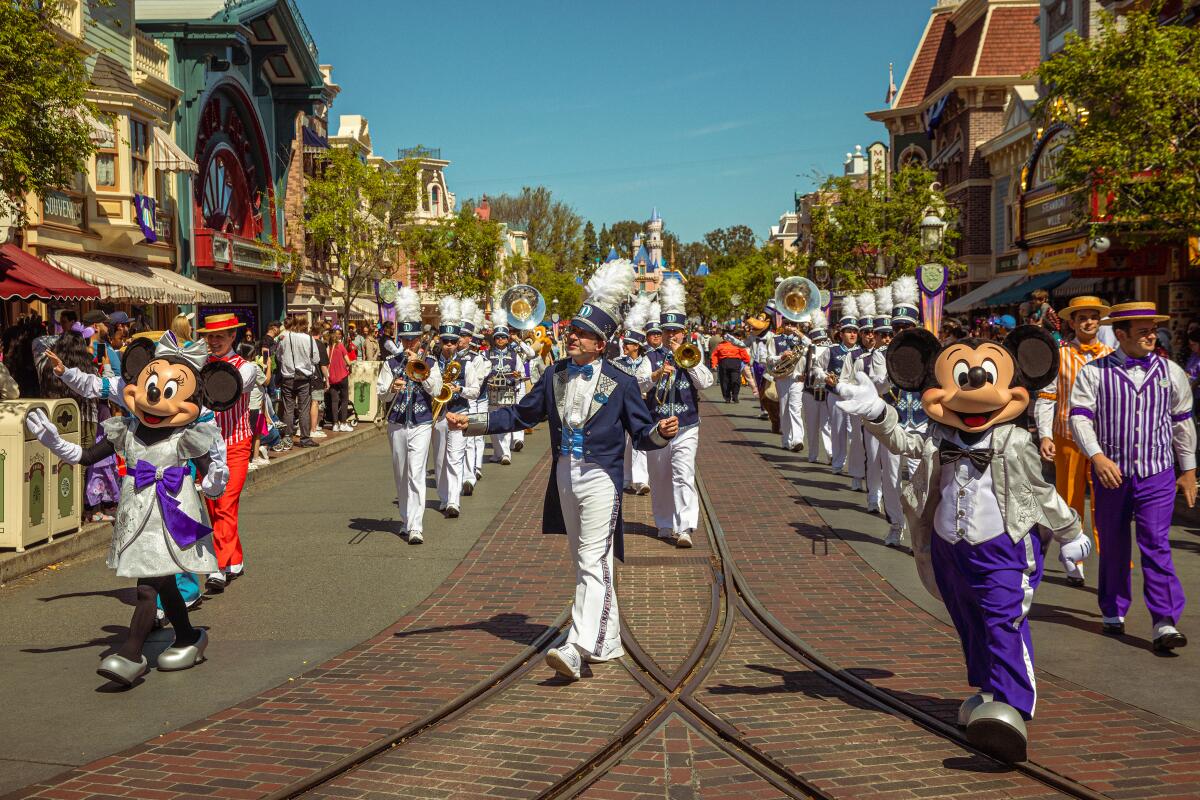Going to Disneyland isn’t just a splurge. It’s like buying a timeshare

- Share via
In early May 1992, as much of Los Angeles smoldered in an uprising known as the L.A. riots, my mother, brother and I took an impulse trip down the 5 Freeway to Disneyland. It’s a memory I recall vividly, with mixed emotions because of the events that consumed the city that week.
My younger brother had just turned 9 and was promised a birthday at Disneyland, but the acquittal of the cops who viciously beat Rodney King changed our plans. The uprising that ensued made my mother’s work at L.A. County hospital (where she is still a nurse) frantic and dangerous, so she and her colleagues hunkered down in Boyle Heights as they worked long shifts.
My brother and I stayed with relatives. Disneyland was the last thing on our minds.
Eventually, the violence subsided enough for my exhausted mother to be sent home. After getting some sleep she pitched us an idea that seemed wonderful to us at the time but in retrospect shows the white privilege we had: We could drop everything and go to Disneyland.
I think about that dystopian excursion whenever my family takes a trip to Disneyland, something that happens much less frequently than it did for me or just about anyone who grew up in Southern California in the 1980s and ’90s. Although a day in Anaheim was always a splurge, today it feels more like buying a timeshare: A visit in 2023 requires days of planning and incurs deep financial regret as soon as the moment is over.
I took my kids to Disneyland over their spring break, and almost nothing about the visit resembled the more accessible, Southern California-oriented experience from decades past. One noticeable difference: You may lose your kids, because navigating Disneyland now requires parents to be glued to their smartphones.
Advanced reservations are required, making impulse trips almost impossible. Ticket prices start at $104 for a day pass — and that’s only for mid-week, low-season days. You’ll pay up to $179 on high-demand days.
That, and the steep fee to park in Disneyland’s taxpayer-funded garage, get you past the gate. Once you’ve spent that much, the sunk-cost fallacy takes hold. Five dollars for a churro, plus a dollar for dipping sauce? At least the napkins are free. Thirteen dollars for a blue, milky “Star Wars”-themed drink? But the straw is included. Five tickets, plus treats, plus meals, plus anything anyone was selling. I’d rather not do the math, but we had the most expensive fun ever.
To be fair, Disneyland’s transformation isn’t unlike other changes in Southern California. Nice experiences weren’t always set aside exclusively for the wealthy. How many adults in L.A. grew up in modest homes that now fetch more than $1 million? How many remember walking up to a Dodger Stadium box office to get a ticket for $4? And who else bought those special $20 Disneyland tickets for Southern California residents only?
Decades ago, a single mom raising two kids in Glendale on a tight budget could. Most years we’d make it to Disneyland several times — a church-group visit here, a summer daycare or friend’s birthday trip there, plus some freebies from acquaintances who worked for Disney. It wasn’t exactly like a trip to a local park, but it was attainable enough to feel like a perk of growing up around Los Angeles, along with frequent Dodger games and cheap skiing in the local mountains.
My children were thrilled by the Disneyland trip. It will be well remembered, but going there won’t be a regular part of a typical Southern California childhood.
More to Read
A cure for the common opinion
Get thought-provoking perspectives with our weekly newsletter.
You may occasionally receive promotional content from the Los Angeles Times.










